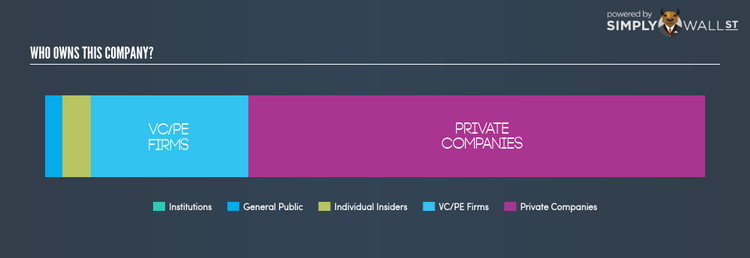Breaking Down Orion Metals Limited’s (ASX:ORM) Ownership Structure

I am going to take a deep dive into Orion Metals Limited’s (ASX:ORM) most recent ownership structure, not a frequent subject of discussion among individual investors. The impact of a company’s ownership structure affects both its short- and long-term performance. Differences in ownership structure of companies can have a profound effect on how management’s incentives are aligned with shareholder returns, which is why we’ll take a moment to analyse ORM’s shareholder registry.
Check out our latest analysis for Orion Metals
Institutional Ownership
Institutional investors typically buy and sell shares in large magnitudes which can significantly sway the share price, especially when there are relatively small amounts of shares available on the market to trade. The company hardly has institutions in its ownership structure, indicating limited concern for investors to worry about potential sell-offs that could arise due to extensive liquidation.
Insider Ownership
Insiders form another group of important ownership types as they manage the company’s operations and decide the best use of capital. Insider ownership has been linked to better alignment between management and shareholders. ORM insiders hold a not-so-significant 4.28% stake in the company, which somewhat aligns their interests with that of shareholders. However, a higher level of insider ownership has been linked to management executing on high-returning projects instead of expansion projects for the sake of apparent growth. It would also be interesting to check what insiders have been doing with their shareholding recently. Insider buying can be a positive indicator of future performance, but a selling decision can be simply driven by personal financial requirements.
General Public Ownership
The general public, with 2.68% stake, is a relatively minor group of shareholders in ORM. This size of ownership may not be enough to sway a policy decision in their favour, but they can still make a collective impact on company policies if it aligns with other large shareholders.
Private Equity Ownership
Private equity firms hold a 23.85% stake in ORM. With a stake of this size, they can be influential in key policy decisions. An investor should be encouraged by the ownership of these institutions who are known to be experts in increasing efficiency, improving capital structure and opting for value-accretive policy decisions.
Private Company Ownership
Another group of owners that a potential investor in ORM should consider are private companies, with a stake of 69.12%. While they invest more often due to strategic interests, an investment can also be driven by capital gains through share price appreciation. An ownership of this size indicates a strong financial backing and has the potential to influence ORM’s business strategy. Thus, investors should dig deeper into ORM’s business relations with these companies and how it can affect shareholder returns in the long-term.
Next Steps:
Institutional ownership level and composition in ORM is not high nor active enough to significantly impact its investment thesis. However, if you are building an investment case for ORM, ownership structure alone should not dictate your decision to buy or sell the stock. Rather, you should be looking at fundamental drivers such as Orion Metals’s past track record and financial health. I highly recommend you to complete your research by taking a look at the following:
1. Financial Health: Is ORM’s operations financially sustainable? Balance sheets can be hard to analyze, which is why we’ve done it for you. Check out our financial health checks here.
2. Past Track Record: Has ORM been consistently performing well irrespective of the ups and downs in the market? Go into more detail in the past performance analysis and take a look at the free visual representations of ORM’s historicals for more clarity.
3. Other High-Performing Stocks: Are there other stocks that provide better prospects with proven track records? Explore our free list of these great stocks here.
NB: Figures in this article are calculated using data from the last twelve months, which refer to the 12-month period ending on the last date of the month the financial statement is dated. This may not be consistent with full year annual report figures.
To help readers see pass the short term volatility of the financial market, we aim to bring you a long-term focused research analysis purely driven by fundamental data. Note that our analysis does not factor in the latest price sensitive company announcements.
The author is an independent contributor and at the time of publication had no position in the stocks mentioned.

